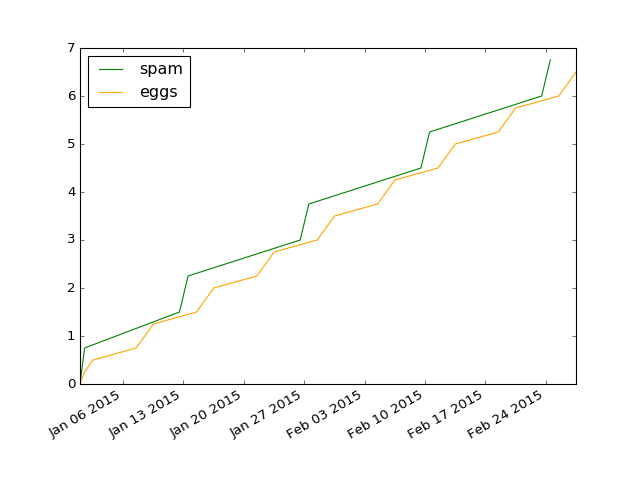Timetable - generate timetables from iCal files¶
iCal is a relatively compact albeit unintuitive and inconvenient text format for calendaring and scheduling information. Recurring events can be defined through a large set of rules, which makes the format compact but inconvenient for automatic processing. The intention of this package is to provide functions to ease the automatic processing of iCalendar files by converting the iCalendar information into a timetable.
Timetable data¶
A timetable is a sorted sequence of tuples containing start and end datetime
of an entry, for example (start, end, entry). start and
end are datetime offset-naive objects (e.g. containing
no timezone information) in UTC time. The entry is a dictionary, containing
arbitrary values.
The following example is a valid timetable list:
[
(datetime(2015, 1, 1, 12), datetime(2015, 1, 1, 13), {}),
(datetime(2015, 1, 2, 12), datetime(2015, 1, 2, 13), {}),
(datetime(2015, 1, 3, 12), datetime(2015, 1, 3, 13), {}),
]
Timetables can be generated from iCal files. The following example shows how a
timetable is generated from all VEVENT entries in a iCal calendar. The example
prints the start datetime of each entry as well as the
calendar events summary:
>>> from timetable import parse_ical, generate_timetable
>>>
>>> icaldata = b"""
... BEGIN:VCALENDAR
... BEGIN:VEVENT
... UID:0
... DTSTART:20150101T120000Z
... DTEND:20150101T130000Z
... RRULE:FREQ=DAILY;COUNT=3;BYDAY=TH,FR
... SUMMARY:event a
... END:VEVENT
... BEGIN:VEVENT
... UID:1
... DTSTART:20150101T123000Z
... DTEND:20150101T133000Z
... RRULE:FREQ=DAILY;COUNT=3
... SUMMARY:event b
... END:VEVENT
... END:VCALENDAR
... """
>>> calendar = parse_ical(icaldata)[0]
>>> for start, end, entry in generate_timetable(calendar, b'vevent'):
... print('%s %s' % (start.isoformat(),
... str(entry['item'][b'summary'][0].value.decode('utf-8'))))
2015-01-01T12:00:00 event a
2015-01-01T12:30:00 event b
2015-01-02T12:00:00 event a
2015-01-02T12:30:00 event b
2015-01-03T12:30:00 event b
2015-01-08T12:00:00 event a
Example application¶
Timetable data can be used to calculate metrics for time management, like for example, compute the time spent in meetings or working on projects.
However, of more pressing concern is the question if you spent more time eating eggs or spam for lunch in two months, assuming you eat spam for 45 minutes but only every other week on monday and tuesday whereas you eat eggs for 15 minutes every week but only from wednesday to friday:
>>> from matplotlib import pyplot as plt
>>> from datetime import datetime, timedelta
>>> from timetable import parse_ical, generate_timetable, clip_timetable
>>>
>>> icaldata = b"""
... BEGIN:VCALENDAR
... BEGIN:VEVENT
... UID:0
... DTSTART:20150101T120000Z
... DTEND:20150101T124500Z
... RRULE:FREQ=WEEKLY;BYDAY=MO,TU;INTERVAL=2
... SUMMARY:spam
... END:VEVENT
... BEGIN:VEVENT
... UID:1
... DTSTART:20150101T120000Z
... DTEND:20150101T121500Z
... RRULE:FREQ=WEEKLY;BYDAY=WE,TH,FR
... SUMMARY:eggs
... END:VEVENT
... END:VCALENDAR
... """
>>> calendar = parse_ical(icaldata)[0]
>>>
>>> start = datetime(2015, 1, 1)
>>> end = datetime(2015, 3, 1)
>>> timetable = clip_timetable(generate_timetable(calendar), start, end)
>>>
>>> dates = {b'spam': [start], b'eggs': [start]}
>>> cumulative = {b'spam': [0], b'eggs': [0]}
>>> for start, end, entry in timetable:
... summary = entry['item'][b'summary'][0].value
... time = (end - start).total_seconds() / 3600
... dates[summary].append(end)
... cumulative[summary].append(cumulative[summary][-1] + time)
>>>
>>> plt.plot(dates[b'spam'], cumulative[b'spam'], color='green', label='spam')
[...]
>>> plt.plot(dates[b'eggs'], cumulative[b'eggs'], color='orange', label='eggs')
[...]
>>> plt.legend(loc='upper left')
<...>
>>> plt.gcf().autofmt_xdate()
>>> plt.show()
(Source code, png, hires.png, pdf)

It is spam.